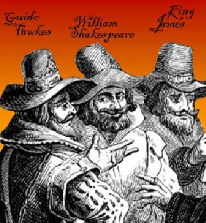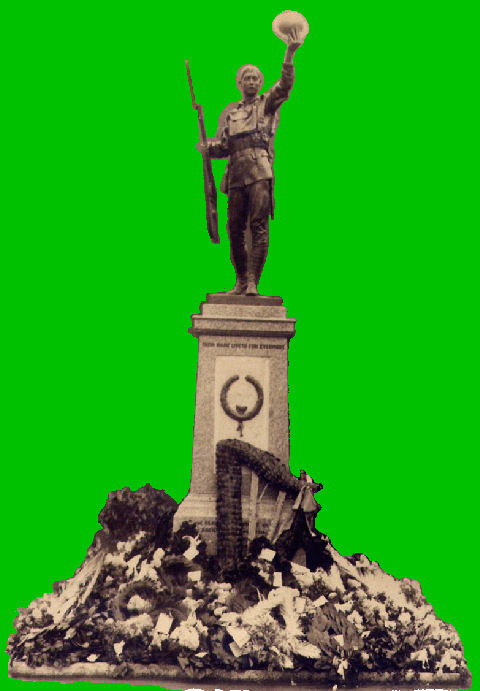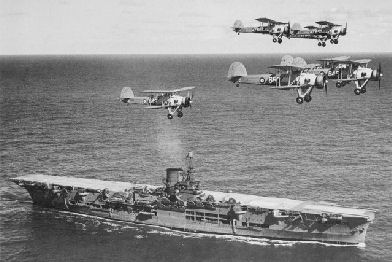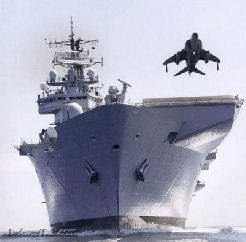AGM Monday 6th December
Please be sure to come along – you will all have received the agenda and accounts. This is your chance to hear all that has happened throughout the year, including behind the scenes, and to find out how much work goes into keeping the Museum running smoothly. It is also an opportunity for you to ask questions – this is your AGM and we look forward to seeing a good turnout.
Wanted!
Please help with contributions for the Christmas Fayre which is coming up on 13th November – we need all the usual items such as crafts, hamper, tins, sweets, toys, bric a brac, bathroom, bran tub gifts, and cakes.
We will also want craft items for the Museum stall at the Craft Fayre upstairs in the Metropole on 27th November.
Another date for your diary is the Winterfest on the afternoon of 7th December; the Museum will follow a Victorian theme with a display of Victorian toys, and we will be selling items from the Museum shop.
Please help – we need helpers as ‘stallholders’ as well as contributions.
100 Club – October
1st No.138 Vera Greaves £25
2nd No. 104 Eileen Warfield £10
3rd No. 80 Margaret Cook £5
Fund raising October - £149
The Table Top Sale made £34.
Annual Dinner 21st January
This will be at the Top Hotel in Llanhilleth. Please contact Roy Pickford to book your place. More information next month.
Diary Dates
Saturday 13th November – our Christmas Fayre at Ebenezer
Saturday 13th November – Gwent County History Association AGM at 2.30, Workmen’s hall Blaenavon, followed by an illustrated lecture
Saturday 27th November - Craft Fayre at the Metropole; the Museum will have a stall
Monday 6th December – Annual General Meeting
Tuesday 7th December (pm) – Winterfest; the Museum will have a stall with a Victorian toy theme
Friday 21st January 2011 – Annual Dinner at the Top Hotel, Llanhilleth
Saturday 29th January 2011 – Coffee morning “Then and Now” by Don Bearcroft
We also have regular coffee mornings. Please call at the Museum for more information.
Christmas closing
The Museum will be closed for two weeks over Christmas and the New Year. The last day of opening will be Saturday 18th December and the Museum will open again on Tuesday 4th January.
Poet’s Corner
'Valley Life’
When I lived up the valley
The mountain our back gate
A coal tip very near you
To us our life was great.
The whistle of the steam train
Across the valley borne
The colliery wheel aturning
In the early morn.
The cockerels started crowing
But no-one seemed to mind
In every other garden
A chicken you’d find.
Up on the mountainside
The pigeon lofts would lie
Owners smoking roll ups
And looking to the sky.
Friday night was darts night
Practice down the pub
Tonight a local derby
Against the workmans club.
Saturday was rugby
Our team colours black
Sluggish in the forwards
But nippy at the back.
We got some mash and sausage
When the game was done
And beer in a bucket
If this week we’d won.
Then to the local dancehall
Brylcream on your hair
You might find your future bride
Waiting over there.
Broke again on Monday
All your money spent
Still you paid the clubman
And your Mam the rent.
Dagworth Orville Charters
Snowdonia 1890
This series, currently being shown on BBC Wales on Mondays, Wednesdays and Fridays, seeks to show the life of quarrymen and smallholders through the experience of two families living as they would have at that time. Sian Price (Jen’s daughter) is one of the producers and we hope she can come along to a coffee morning next year to tell us more about the making of the programmes.
Six Bells Memorial Service
Mrs Olwen Clatworthy has kindly given her permission to reproduce the address she gave at the Memorial Service earlier this year.
Croeso. Welcome to Blaenau Gwent, to Six Bells, to the Six Bells colliery site. Whoever you are, wherever you have come from, we appreciate your coming. We appreciate you joining us at this milestone of our history.
Below this valley, below these beautiful hills that surround us, there lay seams of our black gold. It was a wonderful resource and yet the cost to retrieve it was immense.
That coal was streaked with the blood of our people and it was washed in our tears both of joy and of sorrow. It was the life blood of this community but it demanded our blood also.
The perils of its extraction moulded this community into a determined and resilient people. A people grateful for each day, for in so many ways they were never promised tomorrow.
To say times change is an understatement. Yet in spite of migration, unemployment and the evils of a society hell bent on self gratification, this beautiful little village is emerging into the sunshine of promise.
The deep values of the remnant of this community like hard work, loyalty, respect, justice, love and faith are springing up like green shoots in the desert.
Our martyrs have shed their blood. It has not gone un-noticed. Let it not be wasted either.
If we let him, our God will water those shoots to an oasis. If we acknowledge Him and embrace again those values which make life rich, out of the ashes of suffering will emerge a beautiful place to live, a Six Bells of which we may all be justly proud.
May this day be a milestone for us all. A decisive day when we too nail our colours to the mast. When we cast off apathy, despair and hopelessness and look to Him whose promise is new every morning.
God Bless you all. Have a wonderful day in Six Bells.
An interpretation centre will be opening in due course in a former pub near the ‘Guardian of the Valleys’ statue thus helping ensure that those who lost their lives in the Six Bells disaster will be remembered. The new statue will stand as a permanent reminder of all the mining losses in our valley and throughout South Wales.
Local Voices
‘The Scout Movement in Aberbeeg’
In 1907 Robert Baden Powell held an experimental camp on Brownsea Island in Poole Harbour and published a book called ‘Scouting for Boys’. This triggered a new youth movement which we now know as ‘The Scouts’. In 1908 a scout troop was formed at Glandwr Chapel, Aberbeeg, mainly from boys attending the Sunday School and initially without a leader. Mr Fred Hopes was a member at the time and recalled that their first major activity was a Saturday hike to Abergavenny via Cwmtillery – a round trip of 22 miles. After viewing the shops (they had no money), they returned by the same route. The Troop continued successfully until the aftermath of the First World War when a profound ‘anti-military’ attitude led to the disbandment of many uniform-wearing organisations.
Scouts appeared again at Aberbeeg in 1921 during the prolonged Miner’s Strike when brothers Reg and Ted Lewis decided to form a troop based largely on the Christchurch area but including boys from Aberbeeg and the surrounding areas. Again they had no leader and no place to meet but they devised weekly activities and made plans to build their own hall. A sloping site on waste ground near the Aberbeeg- Cwmnant road junction with Hospital Road was identified and a lease arranged with Llanover Estate. Although lacking knowledge of construction techniques they designed a building with a timber frame covererd by steel corrugated sheets and lined with matchboard. The sloping site required care with the foundations and a local builder, Mr Manning, supplied not only advice and materials but also credit as ready funds were limited. Construction took some time but the building was eventually completed and a formal ceremony saw it officially opened.
Cubs, Scouts and, later, Girl Guides, met in the hall on separate evenings. Members were drawn from Aberbeeg, Brynithel, Soffryd and Llanhilleth with an occasional Six Bells and Abertillery boy. Weekly activities included training sessions, games and hikes, with weekend camps and longer summer camps at various places including Dawlish, Tiverton, Grosmont as well as more local sites. Ilfracombe was a particular favourite. The troop and equipment would be assembled at Aberbeeg Railway station to travel by rail to Newport where they walked to the dock to await the arrival of Campbell’s steamer which would transport them and their kit across the Bristol Channel to Ilfracombe. After a week’s camp they would return by the same route but those still enjoying school holidays would stay longer. The advent of the prolonged Depression of the twenties and thirties saw many changes of personnel because of moves to find work.
The outbreak of the Second World War in 1939 saw an end to the Depression but added to the problems of the Scout Movement with leaders being called up for service or to man local organisations such as the Home Guard. Part of the Scout Hall was taken over as a Warden’s Post and was later used to house families displaced by the V1 and V2 flying bombs. Perhaps the most trying period was the requirement to accommodate large numbers of boys evacuated to the area and who then sought the friendship of the Scout Movement. They arrived in almost overwhelming numbers at first but the situation eventually settled.
Post war housing at Brynithel and Trinant produced cub and scout recruits. Scouts from Aberbeeg were selected to attend the 5th World Jamboree at Moisson in France in 1947, and the World Rover Meet in Switzerland in 1953.
Over the succeeding years Aberbeeg Scouts attended County and District Rallies, Church Parades and camps and participated in competitions and training courses in addition to the usual weekly meetings and activities.
In 1980 Scout leaders were advised of impending works to improve the road between Aberbeeg and Oakdale, necessitating the demolition of the hall in 1981 when the Aberbeeg Scout and Cub group were disbanded. Despite the road plans and site investigations, the road improvements did not go ahead and have still to be commenced.
Laurence Hale
Museum Matters
The dark, dreary and cold of November is on us again. But over the years the month of November has seen its share of hot times.
 The first and most obvious event was the Gunpowder Plot, a conspiracy to blow up the English Parliament and King James I on Nov. 5, 1605, the day set for the king to open Parliament. It was intended to be the beginning of a great uprising of English Catholics, who were distressed by the increased severity of penal laws against the practice of their religion. The conspirators, who began plotting early in 1604, expanded their number to a point where secrecy was impossible. Among them was Guy Fawkes, a soldier who had been serving in Flanders, and Thomas Percy who hired a cellar under the House of Lords, in which 36 barrels of gunpowder, overlaid with iron bars and firewood, were secretly stored. The conspiracy was brought to light through a mysterious letter received by Lord Monteagle, on Oct. 26, urging him not to attend Parliament on the opening day. The 1st earl of Salisbury and others, to whom the plot was made known, took steps leading to the discovery of the materials and the arrest of Fawkes
The first and most obvious event was the Gunpowder Plot, a conspiracy to blow up the English Parliament and King James I on Nov. 5, 1605, the day set for the king to open Parliament. It was intended to be the beginning of a great uprising of English Catholics, who were distressed by the increased severity of penal laws against the practice of their religion. The conspirators, who began plotting early in 1604, expanded their number to a point where secrecy was impossible. Among them was Guy Fawkes, a soldier who had been serving in Flanders, and Thomas Percy who hired a cellar under the House of Lords, in which 36 barrels of gunpowder, overlaid with iron bars and firewood, were secretly stored. The conspiracy was brought to light through a mysterious letter received by Lord Monteagle, on Oct. 26, urging him not to attend Parliament on the opening day. The 1st earl of Salisbury and others, to whom the plot was made known, took steps leading to the discovery of the materials and the arrest of Fawkes
The next event important for us was The Chartist Uprising and march to Newport. On a cold November night 4th in 1839 over 5,000 working men in the south Wales Valleys gathered to march on Newport. Their purpose was to protest about the injustices of their working and living conditions, to present their charter and to release their leaders who had been arrested and held prisoner in the Westgate Hotel.
 Another event in November 1918 was the signing of the Armistice at the end of the 1st World War on the 11th month of the 11th day and the 11th minute. This brought to an end a war that had cost the British Empire over three quarters of a million dead, the French nearly a million and a half and the Germans and the Russians well over a million and a half each.
Another event in November 1918 was the signing of the Armistice at the end of the 1st World War on the 11th month of the 11th day and the 11th minute. This brought to an end a war that had cost the British Empire over three quarters of a million dead, the French nearly a million and a half and the Germans and the Russians well over a million and a half each.
During the Second WW another event happened in November 1941 this was the sinking of the aircraft carrier HMS Ark Royal. Ark Royal was built by Cammell Laird and Company, Ltd. at Birkenhead, England. Completed in November 1938. Her design differed from previous aircraft carriers. Ark Royal was the first ship on which the hangars and flight deck were an integral part of the hull, instead of an add-on or part of the superstructure. Designed to carry a large number of aircraft, she had two hangar deck levels. She served during a period that first saw the extensive use of naval air power. A number of carrier tactics were developed and refined aboard Ark Royal. She was torpedoed on 13 November 1941 by the German submarine

U-81 and sank the following day. Her sinking was the subject of several inquiries; investigators were keen to know how the carrier was lost, given there were efforts to save the ship and tow her to the naval base at Gibraltar. They found that several design flaws contributed to the loss, which were rectified in new British carriers.
Her wreck was discovered by a BBC crew in December 2002, approximately 30 nautical miles (56 km) from Gibraltar.
 It has been announced by the government that the present Ark Royal is to be replaced by two new carriers built. The first aircraft carrier is expected to come into service in 2016, but it will need to be converted to allow it to be used by jets from allied nations and that could take several years. Neither of the new carriers will be used by British military jets until at least 2020
It has been announced by the government that the present Ark Royal is to be replaced by two new carriers built. The first aircraft carrier is expected to come into service in 2016, but it will need to be converted to allow it to be used by jets from allied nations and that could take several years. Neither of the new carriers will be used by British military jets until at least 2020
There is an unconfirmed rumour that the government has ordered the crew of the Ark Royal to run up and down the flight deck vigorously flapping their arms in an experiment to see if British sailors can fly without aeroplanes.
Don Bearcroft curator.


